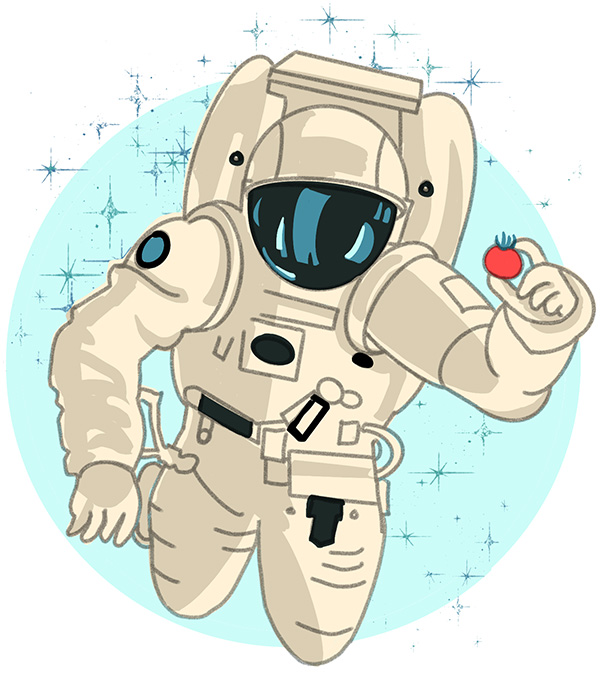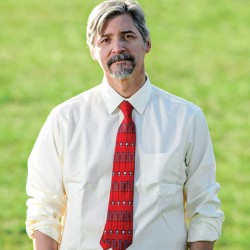TASTIE Treats for Astronauts
UW Teams with NASA to grow plants without gravity.

A fungus may help create gardens to feed long-distance explorers. Danielle Lamberson Philipp
In January, botanist Simon Gilroy and his lab sent tomatoes into space, their sixth plant-based experiment with NASA on the International Space Station. Nicknamed TASTIE — short for Trichoderma Associated Space Tomato Inoculation Experiment — the project aims to give researchers a better understanding of how plants grow without gravity.
“Plants know up from down, right? They don’t have a brain or anything like that, but shoots grow upward, and roots grow downward. They clearly are using directional information,” Gilroy explains.
But remove gravity from the equation and things get wonky. And stressful. That’s where the team is hoping a common fungus, Trichoderma harziannum, will come in. On Earth, the fungus is known to be beneficial for plant growth, making plants hardier in the face of stressors. In space, it may help grow food for long-distance explorers.
“The moon and Mars — where I think we’re going to go — they’re a long way away,” Gilroy says. “You’re going to have to be able to be self-sustaining at a significant level.”
Published in the Summer 2024 issue



Comments
Pam Kowalczyk June 7, 2024
What variety of tomato?